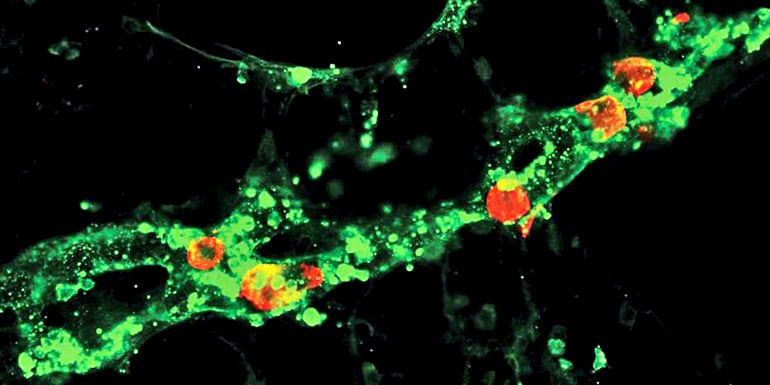Lymphatic vessels actively contribute to the spread of cancer metastases from various organs, a new study shows.
Researchers have discovered a new mechanism that cancer cells in mice and humans can use to spread from organ to organ. The lymphatic vessels play an unexpectedly active role in this process. These vessels transport tissue fluids and also play an important role in the body’s immune system, according to recent research results.
“For the first time, we were able to show that the lymphatic vessels can promote the spread of cancer not only in primary tumors, but also when the cancer has already spread to distant organs of the body,” says Qiaoli Ma, a doctoral student at ETH Zurich and lead author of the study. The findings appear in Science Advances.

Primary tumors are malignant tumors from which cancer cells spread, resulting in the growth of further tumors in more distant parts of the body. These tumors, which may affect tissues or organs, are called metastases.
‘Amplifying role’
In an earlier study on primary tumors, the researchers found that cancer can spread not only through the bloodstream, but also through newly formed lymphatic vessels.
“The surprise in the current study was that the lymphatic vessels also play an amplifying role if the metastases are not propagating from the primary tumor, but from distant organs,” says Michael Detmar, a pharmacogenomics professor and head of the research team (of which Ma is a member) that made the previous discovery.
The density of the lymphatic vessels could be used to predict the course of advanced cancer.
The researchers obtained preliminary results based on anonymous data analyzed from skin cancer patients at the University Hospital Zurich. Based on data from melanoma patients, they determined that the probability that metastatic tumors spread from organ to organ correlated with the density and growth of lymphatic vessels in the metastasized lung.
The more lymphatic vessels that were in the lung, the more tumors grew in distant organs—and the likelihood of patient survival also decreased. The tumor cells therefore appeared to use the lymphatic vessels to spread throughout the body.
Digging deeper
The researchers succeeded in testing and confirming this relationship in mouse models.
“With the help of mouse models with increased density of lymphatic vessels in the lung, we found that in both skin and breast cancer, more metastatic tumors were found in the lung and its draining lymph nodes, and that there was a correlation between the growth of lymphatic vessels in lung metastases and a greater spread to other organs,” says Ma.
The density of the lymphatic vessels can therefore be used to predict the course of advanced cancer. Detmar is thinking of a yet-to-be-developed imaging technique that shows this density.
Even further in the future is a possible therapy approach: “Recent research results suggest that a higher density of lymphatic vessels makes it more difficult for the immune system to eliminate tumors. The suppression of this function of the lymphatic vessels could possibly contribute to the treatment of cancer,” says Detmar.
Additional researchers from the University of Zurich and University Hospital Zurich contributed to this study.
Source: Florian Meyer for ETH Zurich


